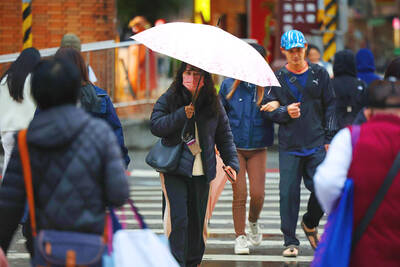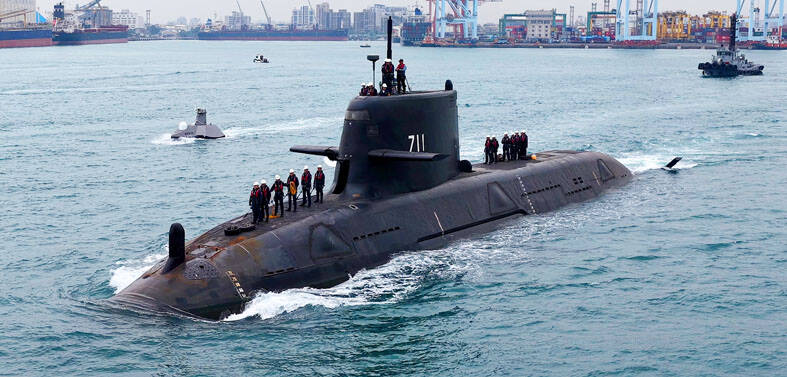The Central Epidemic Command Center for dengue fever yesterday announced it is to cease operating due to the epidemic being stabilized and that normal prevention measures would be taken over by regular government agencies.
The command center was established in September last year, with Vice Premier Chang Shan-cheng (張善政) put in charge.
Centers for Disease Control Director-General Steve Kuo (郭旭崧) yesterday said that because the epidemic has been stabilized, with the weekly reported cases in Tainan steadily dropping for the past 16 weeks, the command center would close.
Kuo said the centers and the Environmental Protection Administration would coordinate to continue monitoring the dengue fever situation. He said that the future strategy for dengue fever prevention would be “monitoring data, ecological mosquito prevention, rapid testing and incident reporting, and prevention measures for high risk groups.”
Integrated data about dengue fever cases collected by various government agencies would allow the centers to create a map that shows the latest dynamic information on infection clusters, cases reported at hospitals and weather reports.
That would allow the centers to decide on the best prevention measures, he said.
Kuo said that because some people do not visit a doctor when they have dengue fever symptoms, as they are afraid of causing trouble for their neighborhood, ecological mosquito prevention measures would also be considered.
The centers has already implemented a rapid dengue fever screening test at the nation’s four international airports to reduce the number of imported infections, he said, adding that it is also discussing with the Tainan and Kaohsiung governments about the possibility of implementing a vaccination program, which would reduce the death rate, especially of people aged 60 and above.

US climber Alex Honnold is to attempt to scale Taipei 101 without a rope and harness in a live Netflix special on Jan. 24, the streaming platform announced on Wednesday. Accounting for the time difference, the two-hour broadcast of Honnold’s climb, called Skyscraper Live, is to air on Jan. 23 in the US, Netflix said in a statement. Honnold, 40, was the first person ever to free solo climb the 900m El Capitan rock formation in Yosemite National Park — a feat that was recorded and later made into the 2018 documentary film Free Solo. Netflix previewed Skyscraper Live in October, after videos

NUMBERS IMBALANCE: More than 4 million Taiwanese have visited China this year, while only about half a million Chinese have visited here Beijing has yet to respond to Taiwan’s requests for negotiation over matters related to the recovery of cross-strait tourism, the Tourism Administration said yesterday. Taiwan’s tourism authority issued the statement after Chinese-language daily the China Times reported yesterday that the government’s policy of banning group tours to China does not stop Taiwanese from visiting the country. As of October, more than 4.2 million had traveled to China this year, exceeding last year. Beijing estimated the number of Taiwanese tourists in China could reach 4.5 million this year. By contrast, only 500,000 Chinese tourists are expected in Taiwan, the report said. The report

Temperatures are forecast to drop steadily as a continental cold air mass moves across Taiwan, with some areas also likely to see heavy rainfall, the Central Weather Administration (CWA) said. From today through early tomorrow, a cold air mass would keep temperatures low across central and northern Taiwan, and the eastern half of Taiwan proper, with isolated brief showers forecast along Keelung’s north coast, Taipei and New Taipei City’s mountainous areas and eastern Taiwan, it said. Lows of 11°C to 15°C are forecast in central and northern Taiwan, Yilan County, and the outlying Kinmen and Lienchiang (Matsu) counties, and 14°C to 17°C

STEERING FAILURE: The first boat of its class is experiencing teething issues as it readies for acceptance by the navy, according to a recent story about rudder failure The Hai Kun (海鯤), the nation’s first locally built submarine, allegedly suffered a total failure of stern hydraulic systems during the second round of sea acceptance trials on June 26, and sailors were forced to manually operate the X-rudder to turn the submarine and return to port, news Web site Mirror Daily reported yesterday. The report said that tugboats following the Hai Kun assisted the submarine in avoiding collisions with other ships due to the X-rudder malfunctioning. At the time of the report, the submarine had completed its trials and was scheduled to begin diving and surfacing tests in shallow areas. The X-rudder,